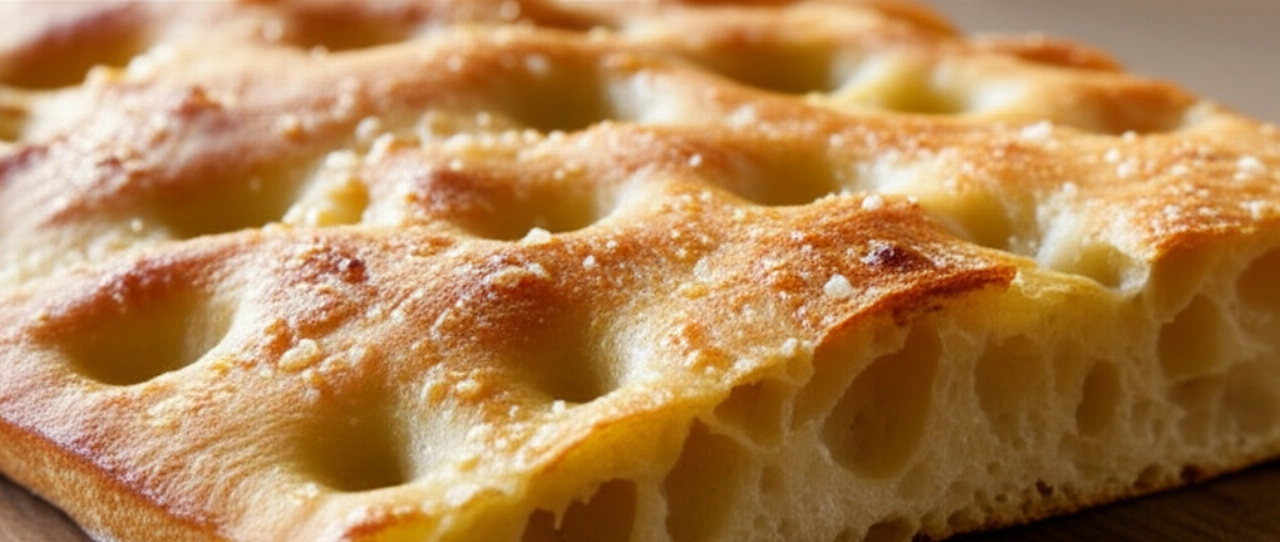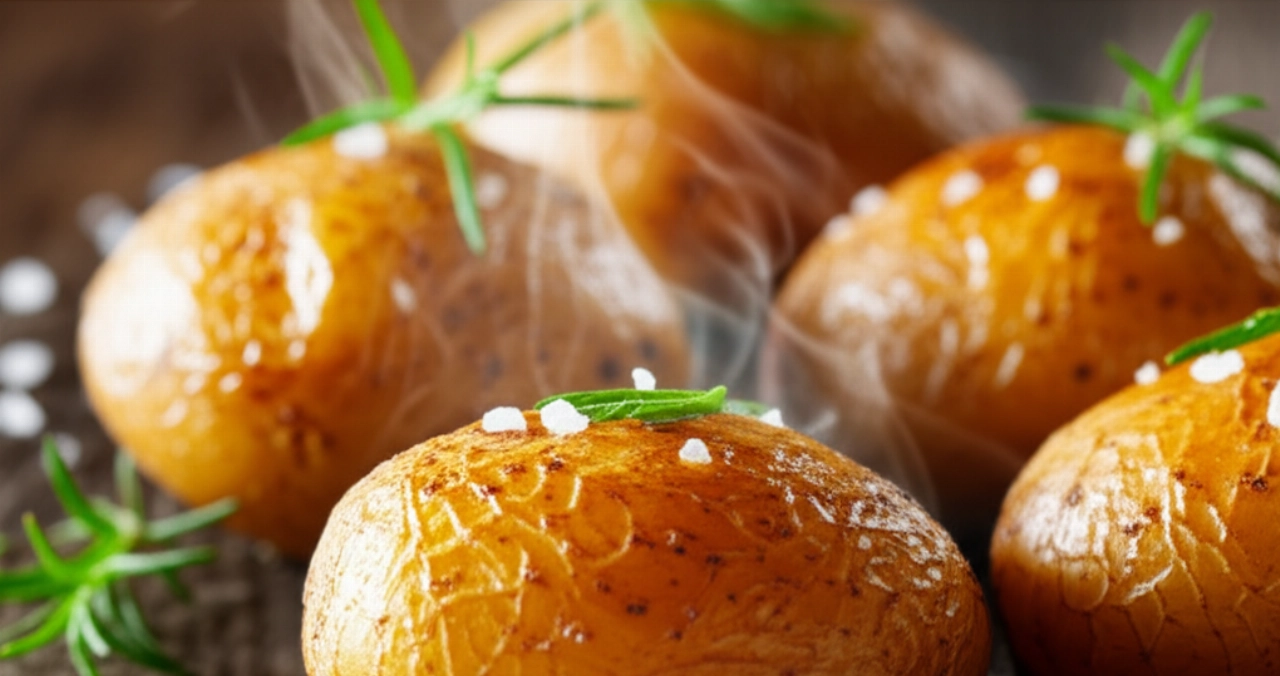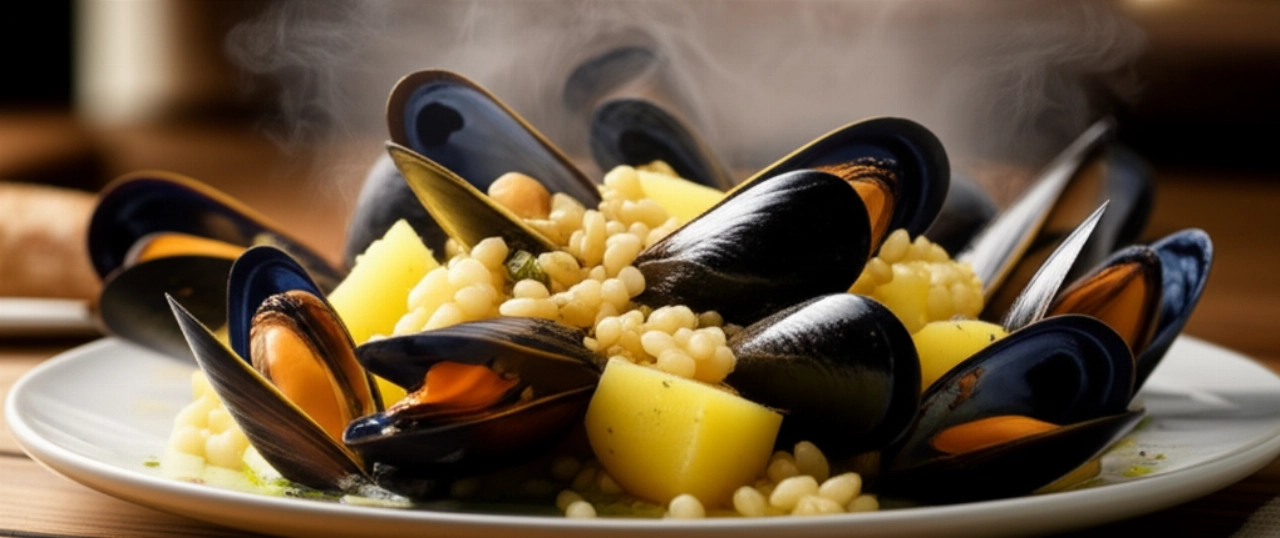Imagine the intoxicating aroma spreading through your home, that of freshly baked bread, warm and fragrant. And now, visualize a tall focaccia, soft as a cloud inside, but with a golden and irresistible crust, studded with juicy cherry tomatoes and flavorful olives. It's not a dream, it's the true Bari-Style Focaccia, the one that makes you feel at home, even if you're not in Puglia.
How many times have you tried to make it, only to get a chewy, dry, or hardened result after just a few hours? Finding the authentic recipe, one that guarantees the softness and unmistakable flavor of tradition, can seem like a challenge. But don't worry, you've come to the right place!
Make yourself comfortable. On this page, you won't just find a list of ingredients, but the definitive guide, full of tips and tricks, to prepare the best Bari-Style Focaccia of your life. I'll reveal the secret that makes it so special and inimitable: the addition of a potato to the dough. Success is guaranteed, and your guests will ask for seconds (and the recipe!).
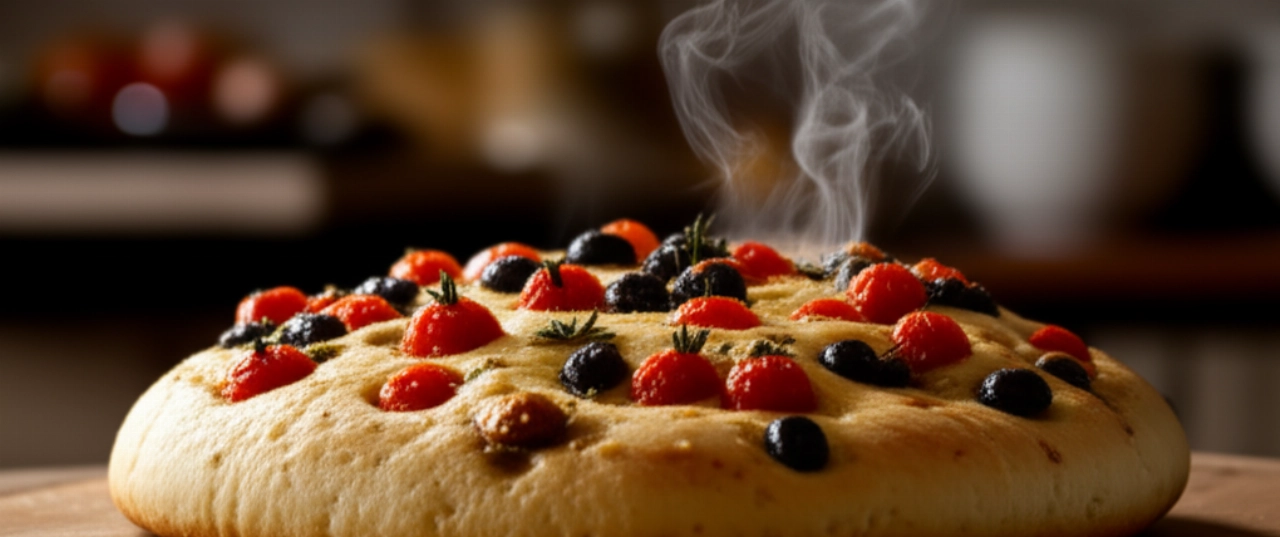
The Secret to True Bari-Style Focaccia: The Potato in the Dough
This is the heart of our recipe, the magical touch that distinguishes true Bari-style focaccia from all other versions. The potato, a humble and unsuspected ingredient, is the key to obtaining an incredibly soft focaccia, which remains so for hours, and with a perfect internal structure (the alveolation).
- Infallible Softness: The starch from the boiled and mashed potato, added to the dough, binds water and releases it slowly during baking and cooling, keeping the focaccia moist and soft.
- Perfect Leavening: It helps nourish the yeast, promoting a more vigorous rise and a more elastic and easy-to-work dough.
- Crispy Crust: Despite the internal softness, the potato helps create that golden and slightly crispy outer crust that is the hallmark of Bari-style focaccia.
It's a small secret passed down from generation to generation, a tip my Apulian grandmother gave me, and which I now share with you to ensure you achieve a result worthy of a true master baker.

Smart Ingredients for a Crowd-Pleasing Bari-Style Focaccia
Every ingredient plays a fundamental role. Choosing the right ones is the first step towards success. It's not just about quantity, but about quality and awareness.
- Flour: Durum Wheat Semolina (Rimacinata): This is the authentic choice! Rimacinata semolina gives the focaccia a golden color, an intense aroma, and a more rustic yet incredibly soft texture. You can use it 100% or mix it with a small portion of 00 flour for an easier-to-handle dough, especially if you're a beginner.
- Fresh Brewer's Yeast: Prefer fresh yeast; it has greater strength and a more delicate aroma. If using dry yeast, remember you'll need about one-third the quantity of fresh yeast.
- Potato: A medium-sized, yellow-fleshed potato, boiled and finely mashed. It's our secret weapon for softness!
- Water: Lukewarm, not hot! Water that's too hot “kills” the yeast. It should be just warm enough to gently activate it.
- Extra Virgin Olive Oil: No compromises here! Choose a high-quality oil, preferably from Puglia. It's a key ingredient both in the dough and for seasoning the surface, adding flavor and crispiness.
- Salt: Don't overdo it, but don't forget it! Salt balances flavors and strengthens the gluten network.
- Cherry Tomatoes: Cherry or date tomatoes, small and juicy. Press them well into the dough before baking.
- Olives: Bari olives (or Gaeta olives) are the most suitable, but Taggiasca or other pitted black olives are also fine, as long as they are flavorful.
- Oregano: A final touch that enhances the Mediterranean aromas.
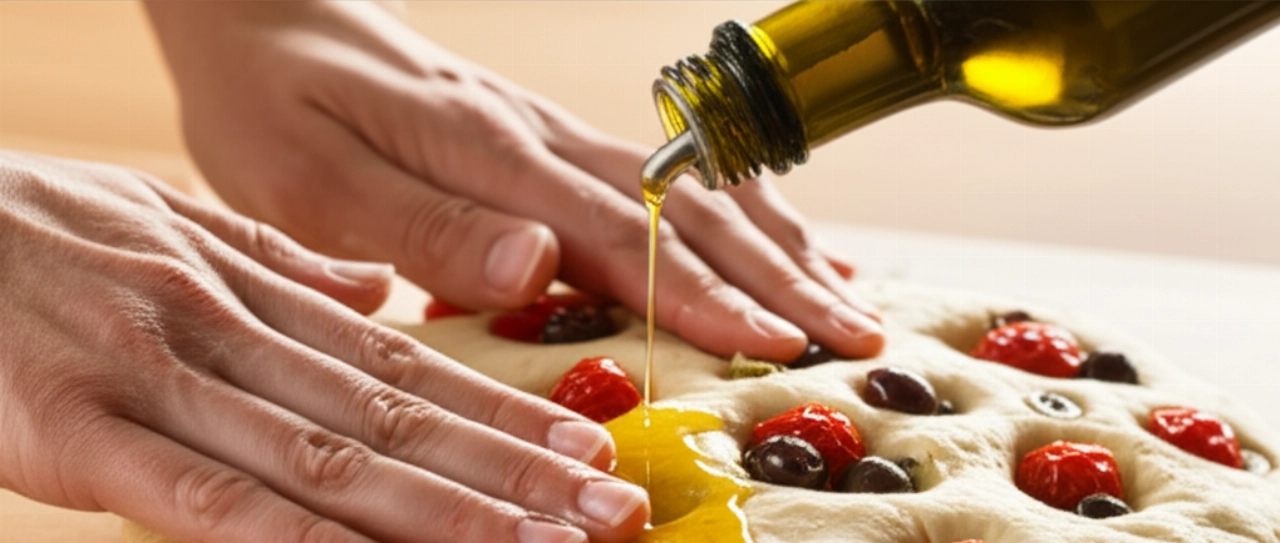
The 3 Mistakes That Make Focaccia Tough (and How to Avoid Them)
Being a good chef also means learning from mistakes. Here are the most common pitfalls and how to avoid them so you don't waste precious time and ingredients:
- Dough Too Stiff or Too Soft: Hydration is crucial. If the dough is too stiff, the focaccia will be dry. If it's too soft, it will be difficult to handle and might not rise well. Add water gradually until you get a soft, elastic, and slightly sticky dough. Don't be afraid to get your hands dirty!
- Insufficient Leavening: Haste is the enemy of good focaccia. Do not reduce the proofing times! The dough must double, even triple, in volume. A warm, draft-free environment is ideal. Remember, patience is your best friend in baking.
- Incorrect Baking: An oven that's not hot enough or too short a baking time will result in pale and gummy focaccia. An oven that's too hot will burn it on the outside while leaving it raw inside. Preheat the oven to its maximum temperature and, if possible, use a baking stone or a very hot baking sheet for even cooking and a crispy base.
Let's Prepare Bari-Style Focaccia Together: The Step-by-Step Guide
Ingredients (for a standard baking sheet, approx. 30x40 cm):
- 500 g durum wheat semolina (rimacinata) (or 400g semolina + 100g 00 flour)
- 1 medium potato (approx. 150-200g)
- 10 g fresh brewer's yeast (or 3-4 g dry yeast)
- 400-450 ml lukewarm water (quantity may vary depending on the flour)
- 10 g fine salt
- 20 ml extra virgin olive oil (plus more for greasing the pan and seasoning)
- 200 g cherry or date tomatoes
- 100 g Bari-style or pitted black olives
- Dried oregano to taste
- Coarse salt to taste
Instructions:
- Prepare the Potato: Wash the potato well, boil it with its skin until tender (about 20-30 minutes from boiling). Peel it while still warm and mash it with a fork or potato masher until you get a lump-free puree. Let it cool slightly.
- Activate the Yeast: In a large bowl (or stand mixer), dissolve the fresh yeast in about 100 ml of lukewarm water. Add a teaspoon of sugar (optional, helps the yeast).
- Prepare the Dough: Add the lukewarm potato puree to the dissolved yeast. Start adding the flour little by little, alternating with the remaining water. When the dough begins to form, add the salt and EVO oil.
- Knead the Dough: Knead the dough vigorously for at least 10-15 minutes by hand (or 7-8 minutes with a stand mixer with a dough hook), until it is smooth, elastic, and slightly sticky. Do not add more flour if it seems too sticky; this is normal for high hydration!
- First Proofing: Form a ball, lightly grease it with oil, and place it in a large bowl. Cover with plastic wrap or a damp cloth and let it rise in a warm place (an unheated oven with the light on is perfect) for at least 2-3 hours, or until it has doubled in volume.
- Prepare the Baking Pan: Generously grease a baking pan with EVO oil. Don't be stingy; the oil on the bottom creates a delicious crust!
- Stretch the Dough: Gently turn the risen dough into the greased pan. With oiled hands, gently stretch it, spreading it to cover the entire surface of the pan. Don't pull it too much; let it relax if it resists.
- Season the Focaccia: Wash and halve the cherry tomatoes. Arrange them on the surface of the focaccia, pressing them in slightly with your fingers. Add the olives. Sprinkle a pinch of coarse salt and a generous dusting of oregano. Finally, drizzle generously with more EVO oil.
- Second Proofing: Cover the pan again with a cloth and let it rise for another 30-45 minutes, or until the focaccia is puffy and spongy.
- Baking: Preheat the static oven to its maximum temperature (220-250°C). Bake the focaccia on the lowest rack for the first 10 minutes, then move it to the center and continue baking for another 15-20 minutes, or until it is golden brown and crispy on the surface and at the base. If your oven has a steam function, use it for the first few minutes for an even crispier crust.
- Remove from Oven and Enjoy: Remove the focaccia from the oven and, if desired, drizzle with a final thread of raw oil. Let it cool slightly on a wire rack before cutting and serving. It will be a triumph of flavors and aromas!
Tips and Frequently Asked Questions about Bari-Style Focaccia
Here are some answers to the most common questions, to ensure you never have surprises in the kitchen.
Can I use only 00 flour?
Yes, you can, but the result won't be the same. Durum wheat semolina (rimacinata) is essential for the authentic flavor and texture of Bari-style focaccia. If you use only 00 flour, the focaccia will be lighter and less rustic, but still good. You might need to slightly adjust the amount of water.
Can I prepare the dough in advance?
Absolutely! For a slower rise and a more complex flavor, you can prepare the dough the night before, reducing the amount of yeast (to 2-3g fresh) and letting it rise in the refrigerator for 8-12 hours. The next day, take it out of the fridge at least an hour before stretching it, to allow it to return to room temperature.
How to store focaccia?
Bari-style focaccia is best enjoyed fresh from the oven or warm. If there's any left over, you can store it at room temperature, covered with a clean cloth, for one day. To keep it soft longer, wrap it in plastic wrap or a paper bag. You can also reheat it slightly in the oven before serving.
Can I freeze focaccia?
Certainly! Once baked and completely cooled, cut it into pieces and wrap each piece individually in plastic wrap and then in aluminum foil. It can be stored in the freezer for 1-2 months. To thaw, leave it at room temperature and then reheat it in a warm oven for a few minutes.
What other toppings can I use?
The version with cherry tomatoes and olives is the most classic, but you can customize your focaccia! Try it with thinly sliced onions, oregano, and a drizzle of oil; or with very thin potato slices and rosemary; or even with grilled zucchini and Parmesan shavings. Let your imagination run wild!
Your Masterpiece is Ready: Enjoy True Bari-Style Focaccia!
There you have it! Now you no longer just have a recipe, but all the secrets to bring a dish to the table that tastes of home, tradition, and love. The Bari-Style Focaccia with potatoes in the dough is a sensory experience that will win everyone over, from the first bite.
Don't be afraid to experiment. Cooking is an act of creativity and generosity. But start with this solid and infallible base, and you'll see that applause will not be lacking. The aroma will guide you, and the flavor will reward every effort.
Have you tried our recipe? We're very curious to see your masterpiece! Leave a comment below, tell us how it went, or share a photo on Instagram by tagging @SearchRecipes. If you loved this focaccia, you can't miss our recipe for Original Apulian Taralli or for a perfect first course like Orecchiette with Turnip Greens. Happy cooking!

